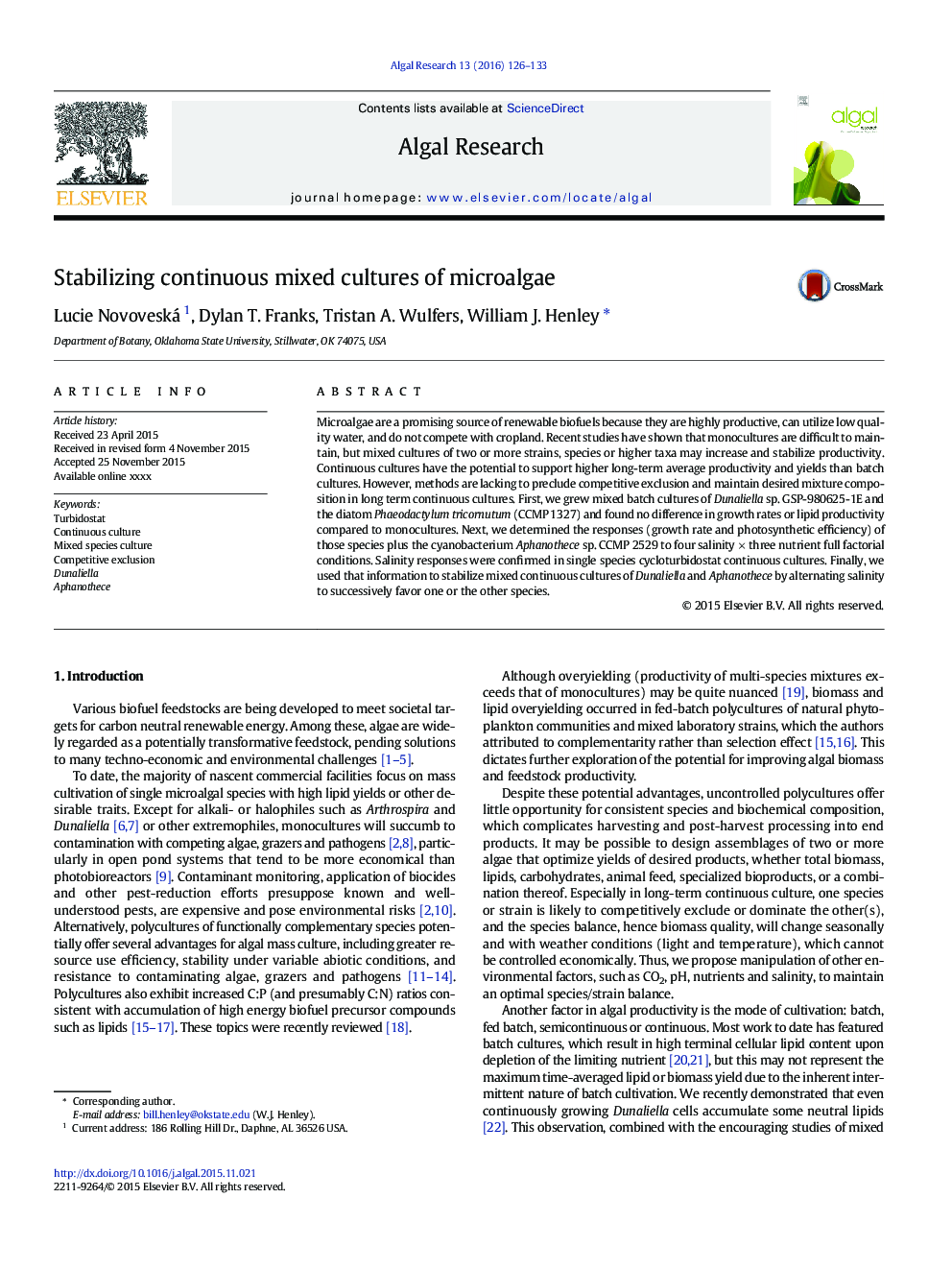| Article ID | Journal | Published Year | Pages | File Type |
|---|---|---|---|---|
| 8087467 | Algal Research | 2016 | 8 Pages |
Abstract
Microalgae are a promising source of renewable biofuels because they are highly productive, can utilize low quality water, and do not compete with cropland. Recent studies have shown that monocultures are difficult to maintain, but mixed cultures of two or more strains, species or higher taxa may increase and stabilize productivity. Continuous cultures have the potential to support higher long-term average productivity and yields than batch cultures. However, methods are lacking to preclude competitive exclusion and maintain desired mixture composition in long term continuous cultures. First, we grew mixed batch cultures of Dunaliella sp. GSP-980625-1E and the diatom Phaeodactylum tricornutum (CCMP 1327) and found no difference in growth rates or lipid productivity compared to monocultures. Next, we determined the responses (growth rate and photosynthetic efficiency) of those species plus the cyanobacterium Aphanothece sp. CCMP 2529 to four salinity Ã three nutrient full factorial conditions. Salinity responses were confirmed in single species cycloturbidostat continuous cultures. Finally, we used that information to stabilize mixed continuous cultures of Dunaliella and Aphanothece by alternating salinity to successively favor one or the other species.
Related Topics
Physical Sciences and Engineering
Energy
Renewable Energy, Sustainability and the Environment
Authors
Lucie Novoveská, Dylan T. Franks, Tristan A. Wulfers, William J. Henley,
